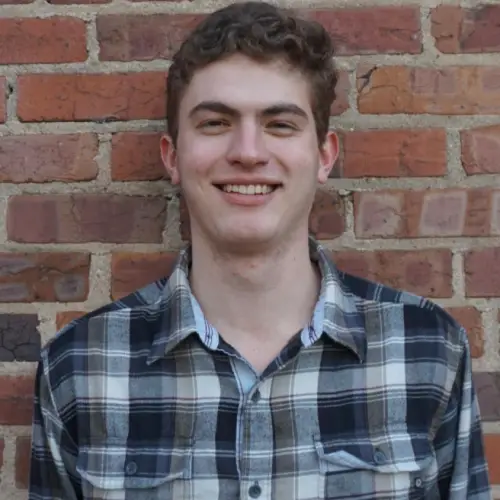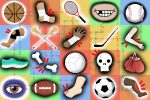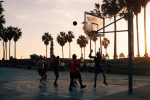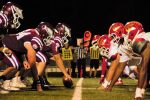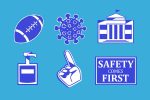Max Haensel, a senior student-athlete at Brown University, is majoring in applied mathematics-economics while also running for the Brown men’s track team.
He holds school records in the 500 meter dash and the 800 meter dash, posting times of 1:02.72 (third all-time in Brown men’s track history) and 1:50.45 (sixth all-time in Brown men’s indoor track history), respectively.
After graduating in May of 2018, Haensel plans to work for Peter J. Solomon Company, which is one of the leading financial advisory firms on Wall Street in New York City.
Running has been a passion of Haensel’s for over a decade and has led to opportunities that are greater than the sport itself – namely being able to organize a team for the renowned Hood to Coast Relay Race that takes place annually in Oregon.
The Hood to Coast Relay Race is nationally dubbed as the “mother of all relays” and today attracts 1,050 teams, some of whom are sponsored by some of the world’s most successful athletic corporations such as Nike, Adidas and Dick’s Sporting Goods.
For 26 years, teams consisting of no less than eight but no more than 12 runners have stood at the summit of Mount Hood, located in the Cascade Volcanic Arc of northern Oregon, and then raced 199 miles through the city of Portland and the picturesque countryside to finally finish on the beaches of Seaside, Oregon.
Along with its undoubted physical challenges, Hood to Coast teams also compete to raise money; teams have raised millions of dollars for charities across the world through this event.
For five years and counting, Haensel, along with his younger brother, former high school track teammate and freshman at Northwestern University Brett Haensel, his father Doug Haensel and his mother Paige Haensel, have headed and helped organize a relay team named “Doug’s Dirty Dozen” that runs competitively in the Hood to Coast Relay Race.
More importantly, however, the Haensel family have helped raise money for the American Cancer Society through this event.
Haensel’s competitive drive and charitable ambition stem from a deeply-rooted work ethic, personal setbacks and a desire to not only further his own aspirations but to also help others reach their goals as well.
Sam Kasierski: Talk a little bit about how you got into Hood to Coast. How much money have you helped raise for the American Cancer Society over the years? Do you have any specific stories from your experience doing the race that you think exemplifies what Hood to Coast is all about?
Max Haensel: I started running Hood to Coast my sophomore year of high school as part of a team at Ravenscroft (high school in Raleigh, NC) that Josh Silver (former Ravenscroft track member) led. The following year, Silver kind of passed the torch to my family and we’ve put together a team with either my brother or me at the helm every year since.
Those teams have combined to raise well over $300,000 for the American Cancer Society and I think that’s really what motivates the experience each year. Hood to Coast is such an incredible experience for so many reasons, but I think running for the cause and to honor others, be it cancer survivors or those who have passed, gives it its underlying meaning.
I think the 2014 team running the race in bowties, after the tragic death of JT Taylor, exemplifies that notion best. JT was a friend of mine and member of the 2013 team who passed away in June of 2014, so our team wore bowties, something JT commonly wore and took pride in, during the 2014 race in his honor.
SK: What is it like being a student-athlete, especially being one at an academically rigorous institution such as Brown?
MH: Having my track commitments (which probably range from 20 – 25 hours a week) actually eased the transition from high school because it maintained some semblance of structure in my life.
I think I’m overall more disciplined because of track in that I have somewhere to be each day and know I need to get my work done each night so that I can get proper sleep (which is a huge component of running success). Also, while Brown is indeed an elite academic institution, it’s a little more laid back than people may perceive.

SK: Where did your competitive edge originate from? Was it something that you think was instilled in you from a role model? Or was it something you more or less found on your own?
MH: I’ve been intensely competitive as early as I can remember and I think it’s just how I’m wired rather than how I was raised. I’m extremely competitive in all areas of life (running, school, other sports, work, video games, etc.) and often it’s something I actually have to work to tone down.
But I love the stakes of competition and the feeling of winning, and I’m honestly a pretty sore loser at times. I’m thankful I’ve been able to continue competing in track at a level higher than I ever thought I would get to.
SK: Your brother, Brett Haensel, also shares a similar passion for running. Talk about how running has shaped your relationship with Brett.
MH: Running has definitely strengthened my bond with Brett in a huge way — it’s been a central part of our lives and something we’ve shared for my entire adolescent and adult life so far. Shared suffering and pain brings people together and forms strong friendships, and Brett and I have always had that since we’ve run and worked out together so many times.
Another component is that we’ve always shared similar goals and ambitions, and so we’ve been able to push and support each other and also understand where the other one is coming from at all times. I’m extremely thankful Brett has played such a big role in my running career.
SK: What is the most important life lesson, be it when you’re running track or doing Hood to Coast, that you have taken from running?
MH: I think definitely the biggest life lesson I’ve taken from my 10 years of competitive running is how to deal with setbacks. I’ve suffered several tough injuries at inopportune times throughout my career and also had my share of bad races.
But learning how to lean on teammates, friends and family during times of adversity and then mentally come to terms with the setback and refocus on a new goal — those are the skills that track has cultivated. Personally, I think athletics has taught me way more in terms of life skills than my time in a classroom throughout college.
SK: You are going to enter the real world in New York after graduation. Do you ever worry that running will become a lesser part of your life or not as great of a passion once you start working?
MH: I think about life after hanging up the spikes all the time. I am very much at peace with the end of the road actually. Like I said earlier, it’s been 10 years of running competitively, so I’m approaching the range of burning out and don’t really have a desire to continue running competitively.
I think I’ll still run to stay in shape but instead will get involved in other sports to the extent that I can. And I’ll definitely continue running Hood to Coast for as many years as we have the interest.




